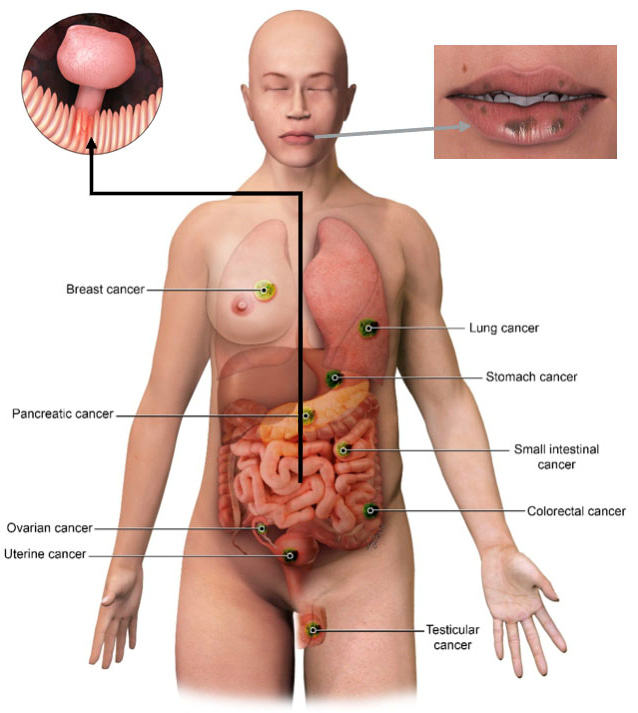Overview
Peutz–Jeghers syndrome (PJS) is a rare genetic condition characterized by the development of benign polyps in the gastrointestinal (GI) tract and distinctive pigmented spots on the skin and mucous membranes. It is considered a hereditary disorder with an autosomal dominant inheritance pattern, meaning a child has a 50% chance of inheriting the condition if one parent is affected.

Causes and Genetics
PJS is most commonly caused by mutations in the STK11 (also known as LKB1) gene located on chromosome 19. This gene plays a crucial role in regulating cell growth and preventing tumor formation. Mutations lead to uncontrolled growth of cells, which can result in the formation of polyps and an increased risk of cancer.
Clinical Features
- Mucocutaneous Pigmentation
One of the hallmark signs of PJS is dark blue to brown freckle-like spots, particularly around the lips, mouth, fingers, toes, and sometimes inside the mouth. These often appear in childhood and may fade with age. - Gastrointestinal Polyps
Noncancerous polyps, typically hamartomas, develop mainly in the small intestine, though they can also appear in the stomach, colon, and other parts of the GI tract. These can lead to:- Abdominal pain
- Intestinal obstruction
- Gastrointestinal bleeding
- Intussusception (a serious condition where a part of the intestine folds into another part)
- Cancer Risk
Individuals with PJS are at a significantly increased risk of developing various cancers, including:- Gastrointestinal cancers (colon, stomach, small intestine, pancreas)
- Breast cancer
- Ovarian and cervical cancers
- Testicular tumors
Diagnosis
Diagnosis is based on a combination of clinical signs, family history, and genetic testing. Criteria include:
- Presence of characteristic mucocutaneous pigmentation
- Multiple hamartomatous polyps in the GI tract
- A family history of PJS Genetic testing for mutations in the STK11 gene can confirm the diagnosis.
Management and Surveillance
There is no cure for PJS, but regular surveillance and proactive management are essential to reduce complications and detect cancers early. Recommendations may include:
- Regular endoscopic screening to monitor and remove polyps
- Imaging tests like MRI or CT scans for cancer surveillance
- Breast, gynecological, and testicular exams for early detection of tumors
- Genetic counseling for family members
Prognosis
With vigilant medical surveillance and early intervention, individuals with PJS can manage symptoms and reduce the risk of severe complications. However, the lifelong increased risk of cancer requires ongoing monitoring.
Conclusion
Peutz–Jeghers syndrome, though rare, carries significant health implications due to its cancer risk and GI complications. Awareness, early diagnosis, and regular screening are critical components of effective management. Advances in genetics and preventive medicine continue to improve outcomes for individuals living with this syndrome.
